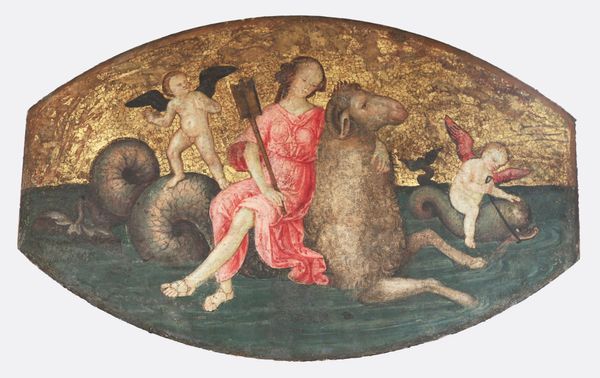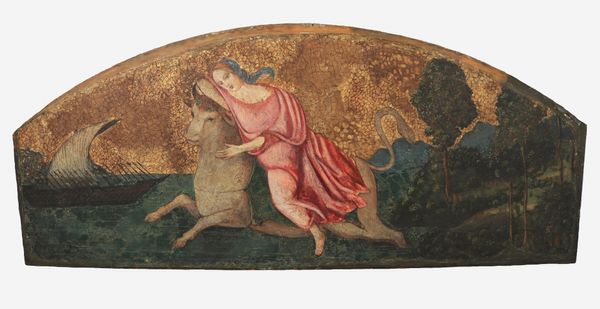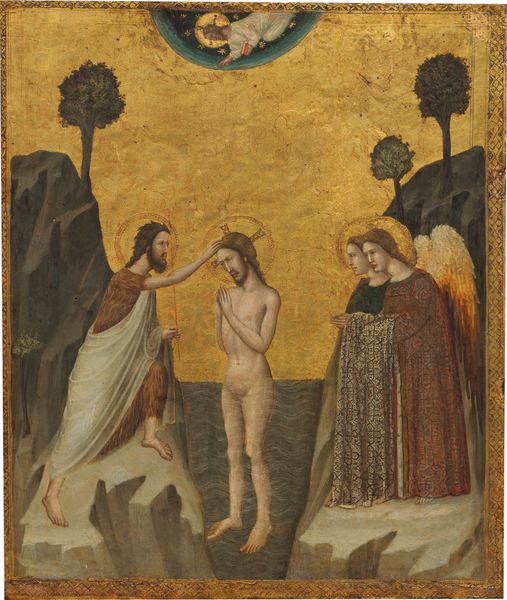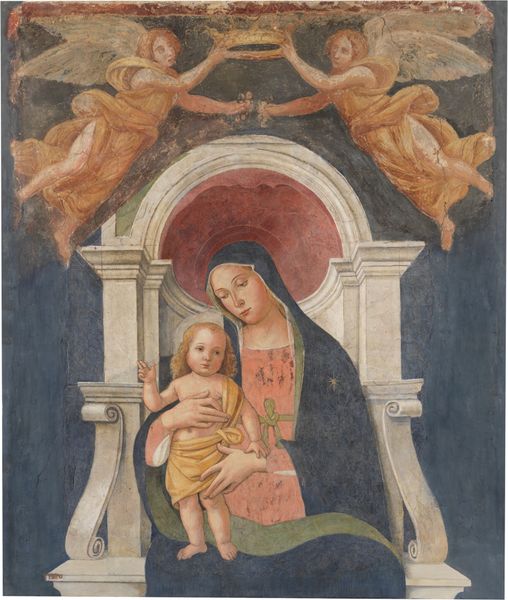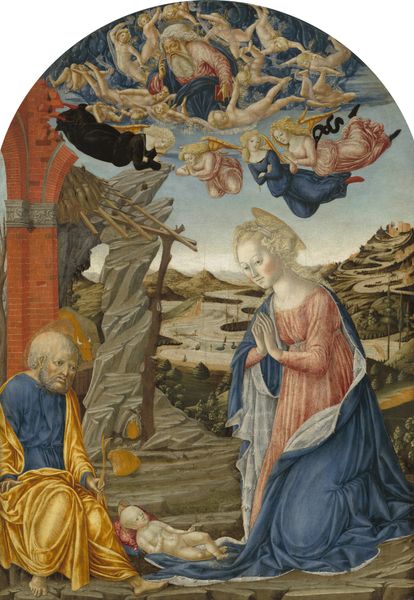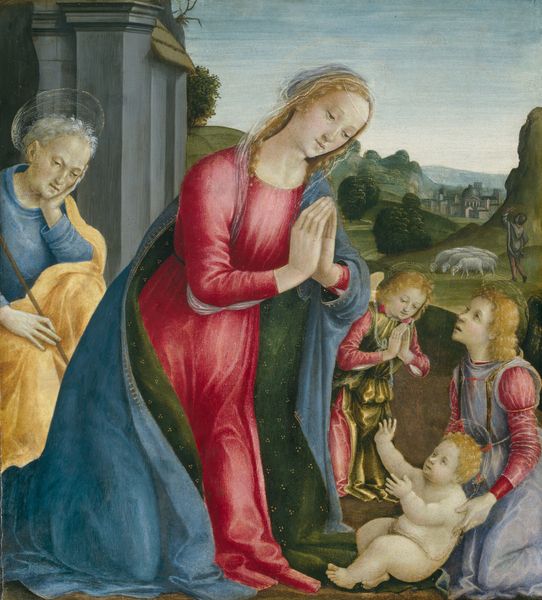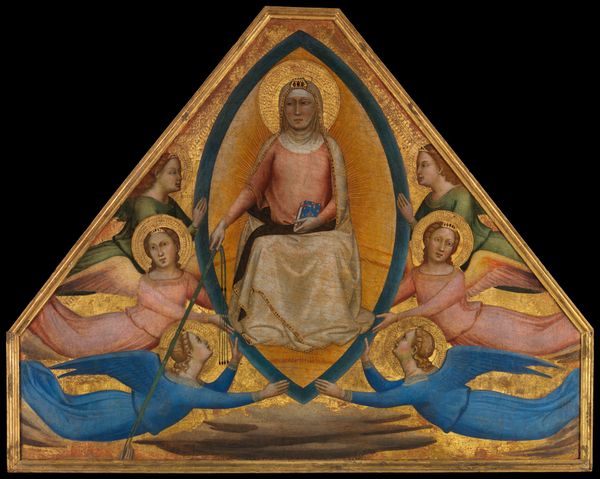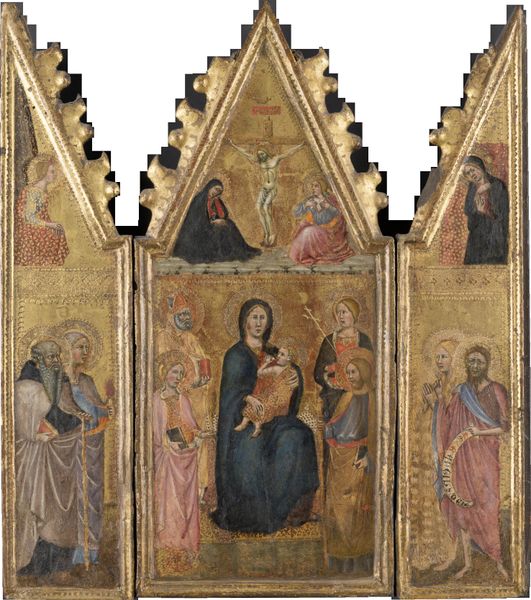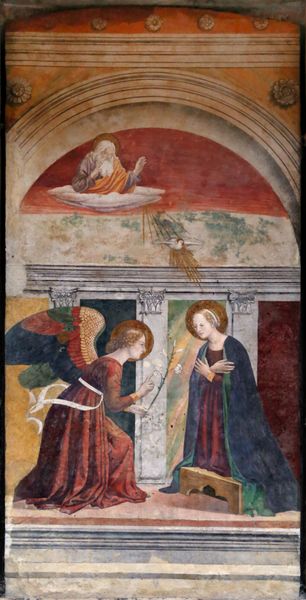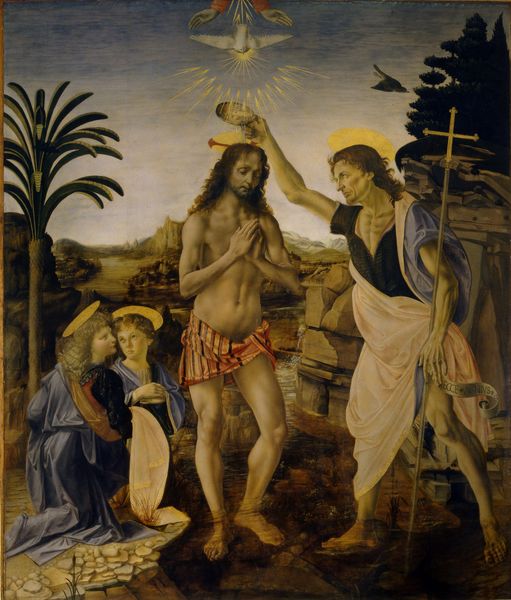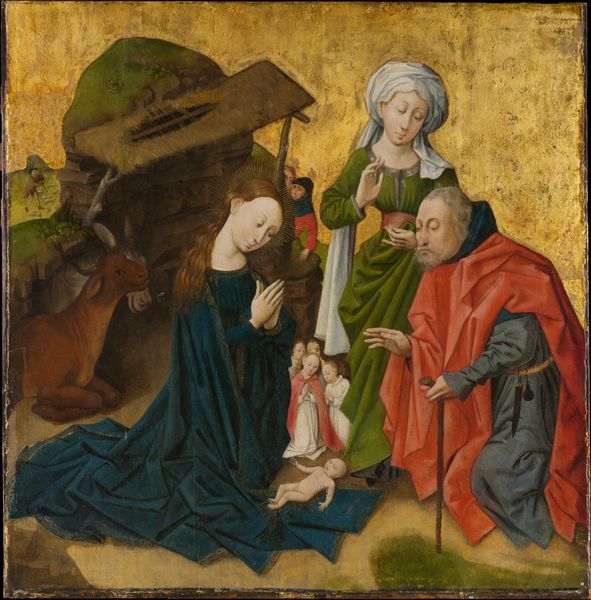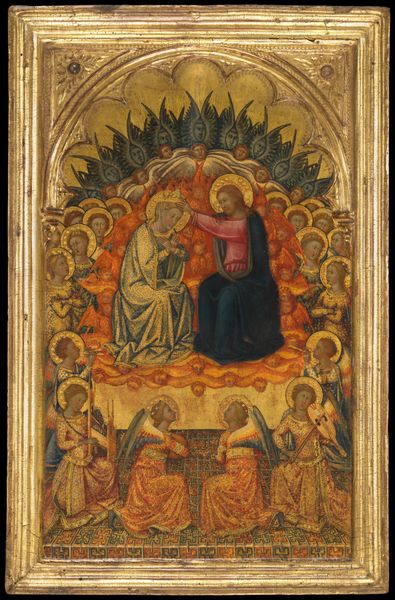
painting, oil-paint, fresco
#
portrait
#
narrative-art
#
painting
#
oil-paint
#
landscape
#
figuration
#
fresco
#
oil painting
#
genre-painting
#
history-painting
#
decorative-art
#
italian-renaissance
Dimensions: Overall: 17 1/4 × 39 in. (43.8 × 99.1 cm)
Copyright: Public Domain
Curator: Before us hangs Pinturicchio's panel painting, Hercules and Omphale, believed to have been completed sometime between 1504 and 1514. Editor: What strikes me is the symmetry. Each figure bookends the scene, their verticality emphasized against that wonderfully patinated gold ground. It creates an almost decorative feel. Curator: Absolutely, the Italian Renaissance embraced the decorative, but let’s consider the narrative itself. Hercules, a figure of immense strength, is humbled, forced into servitude, even emasculated by Queen Omphale. Think about that power dynamic, that reversal of traditionally masculine and feminine roles within its historical moment. Editor: The contrast is emphasized by color, too. Hercules, sitting there with those rather unheroic goats, feels muted in earth tones against Omphale's vibrant reds. Her very uprightness gives the eye something solid to grasp in all that glittering space. The eye reads her certainty. Curator: That "certainty," visually striking, invites a dialogue on gender and power in the early 16th century. Hercules isn’t simply stripped of his strength, he’s literally spinning yarn; domestic, feminized, in service to the Queen’s desires. Consider that through the lens of feminist art history—a subversion of heroic tropes. Editor: But there’s such harmoniousness achieved via visual rhythm and color that the “subversion” seems less important, less sharp than a reading only about gender dynamics would permit. It is a controlled design above all else, that gold reflecting the cool of the fresco paints in interesting ways... Curator: Indeed, and perhaps this tension *is* the point—a painting about the complex, often contradictory relationships of dominance and submission. Its beauty, almost masking that critique, forces us to look deeper, to consider power in more nuanced ways. Editor: Precisely. The overall impression encourages one to linger—it seems even this 'simple' visual has layers. Curator: Thank you; my thoughts exactly. A complex portrayal we'll each carry with us.
Comments
No comments
Be the first to comment and join the conversation on the ultimate creative platform.

